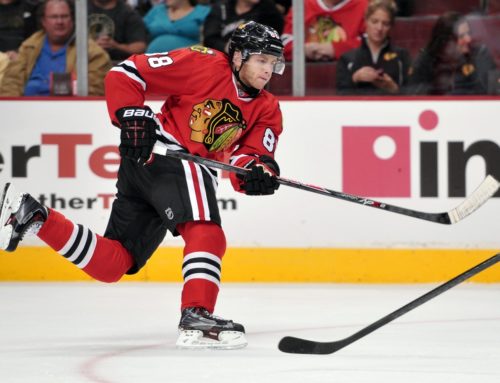
The Contrarian offers some advice on getting rookies to dive into fantasy hockey.
It is officially spring time and as I write this column there are 24 days left of regular season hockey. Some of you are still in battles for first place and prizes, while most others are lingering about lunchrooms and office cubicles lamenting over many what-if scenarios.
Oh woe is me. What am I going to do?
Lucky enough the playoffs are just around the corner and it is your chance to redeem yourself (or prove that you weren't simply lucky in the regular season). It is also a great time to introduce new people into hockey pools.
Now there are two common playoff formats. The box draft and the normal points-only snake draft with few or no restrictions as to how many players can be selected from any one NHL team.
The box draft is a quick way to get people to enter a pool that doesn't require everyone being around to draft players. The question is mostly making up the different boxes and where each player gets slotted. It works but it is not very exciting. On rare occasions there are two people with the same box selections.
The points-only normal snake draft works too. Some people target three or four key teams and then go gung-ho and only take players from those teams. Others try to get the best player available regardless of the team and hope that there is an upset that works in their favour, or that the series goes to seven games and their player is able to rack up big points in those few games. The problem is that usually after the second round most people are weeded out and have no hope to catch up to the leaders. So they tend to tune out unless their favourite team is still alive.
There is another format that would be good, especially for hockey pool beginners. That is to do a snake draft but only be allowed to take one player from each NHL playoff team. That way everyone will have players in every game all the way up until the Stanley Cup Finals. The only way you would not is if your player was injured or benched.
You could even add in a requirement to fit in positional needs. That would make the draft very interesting. Say ten forwards and six defensemen or possibly nine forwards, five defensemen and two goalies.
Now I have traditionally been against using goalies in the usual format of giving them points based on wins and shutouts (or even their goals against average) but I have been more inclined to let them be in a points-only pool using a formula instead. The formula being:
=MAX( 0, ( ( Shots Against / 10 ) – Goals Against )
Basically, goalies get one tenth of a point for every shot they save but lose a full point for every goal they allow. The MAX portion of the formula is to ensure that they do not get negative points. Players do not get negative points so why should goalies.
You might be asking, why one tenth of a point for every shot?
Give or take in each of the last couple of season it is approximately one goal for every ten shots taken. Sometimes it is closer to 11 shots and sometimes it is a little bit over nine shots. The key thing is to reward goalies that do better than the average.
A goalie wins a game 4 to 3 but stops 25 shots, well they would be less than average with -0.5 points (or 0 if using the MAX formula). If however the other goalie stops 50 shots they would be +0.5 points even though they lost the game.
Think if it this way, the forward on the losing team gets a hat trick but his team still lost, his efforts are rewarding the owner who has him. It would be the same thing for the goalie that lost the game too. He stopped more shots than the average and thus should be rewarding his fantasy owner too.
The goalie that won but didn't stop enough shots, well that's like the third or fourth liner that is one the ice for the win but it was the top line that got all the goals.
Regardless of the inclusion or exclusion of drafting goalies, the benefits of this format remain that each participant owner will have two players in each and every game. In theory, fewer owners will be knocked out of contention too soon and their interest in hockey pools will be piqued, especially beginners.
From there you introduce them to the regular season drafts and eventually the keeper and salary cap leagues.
It all starts with planting a seed.





 FLA
FLA CHI
CHI NYR
NYR PIT
PIT L.A
L.A COL
COL CBJ
CBJ ANA
ANA WPG
WPG TOR
TOR MTL
MTL SEA
SEA S.J
S.J BOS
BOS VAN
VAN
